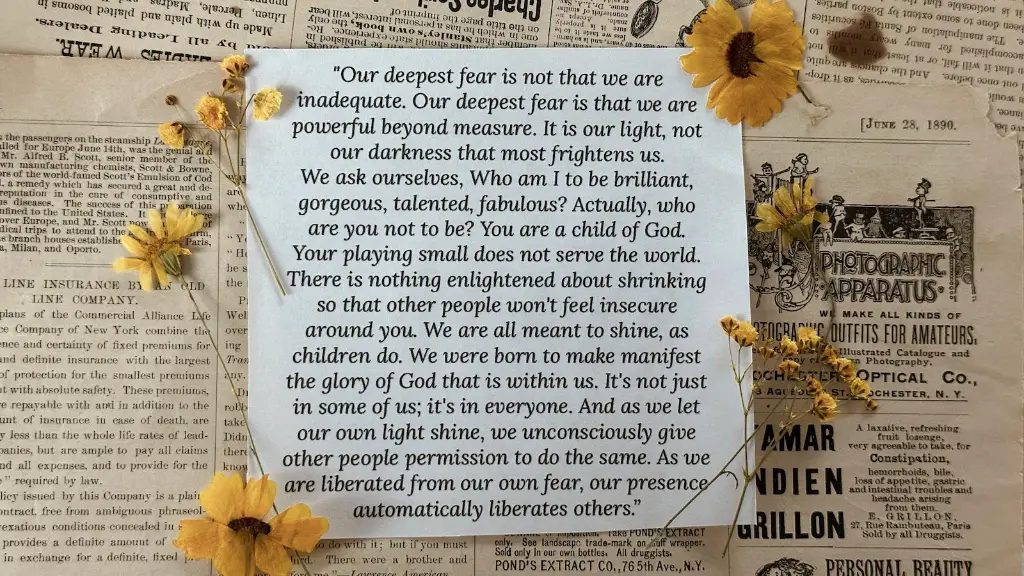The definition of sonnet in poetry is often disputed and debated, as the form has a long and varied history. While the sonnet has its roots in Italy, the term sonnet is derived from the Occitan word sonet, which means ‘little song’. A sonnet is a poem of fourteen lines, typically of a regular meter and rhyme scheme, usually written in iambic pentameter – a poetic meter of five feet per line, made up of two syllables in a rising pattern. The sonnet is often described as a ‘moment or mood’ captured in a single moment: the speaker’s thoughts, emotions, and observations about their subject, held within the bounds of fourteen lines. This moment is then ‘frozen’, sealed in the poem, and becomes a unique and timeless object of art.
Classification of Sonnets
Sonnets have been traditionally divided into two broad types: the English sonnet and the Italian sonnet. The English sonnet consists of three quatrains (four lines of verse) and one couplet (two lines of verse) in iambic pentameter. It is traditionally rhymed according to the Shakespearean pattern, abab cdcd efef gg. The Italian or Petrarchan sonnet has an eight-line octave followed by a six-line sestet. It is usually rhymed according to the pattern abba abba cde cde or abba abba cdcdcd. The volta, or turn, usually occurs somewhere between the octave and the sestet, marking a change in theme or direction. William Shakespeare wrote the majority of his sonnets in the English form, while the Italian form was popular with Petrarch and other Italian poets.
Evolution of the sonnet form
The traditional notion of a sonnet as a fixed unit, both in form and content, has been increasingly rejected by poets and scholars alike. Poets have continually pushed the boundaries of the sonnet form, encouraging poets to stretch its conventions and find more creative and inventive ways to explore its potential. While the sonnet form traditionally discusses a single idea or aspect of a subject, modern poets have engaged in more complex and multi-faceted treatments of topics as wide-ranging as love, nature, family and politics. This evolution of the sonnet form has introduced a range of new possibilities for poets, allowing them to create more complex, rich and varied treatments of their topics.
Techniques used in sonnets
Many poets have employed various techniques in their sonnets to create an emotional impact. These include the use of rhyme, rhythm, and alliteration to draw the reader in; internal rhyme and assonance to add to the musicality of the poem; and metaphor, similes, and symbols to provide metaphorical insight into the poem. Furthermore, many sonnets play with the conventions of the form, inverting traditional elements of sonnet form, such as its meter, structure and rhyme, to develop a unique and original perspective.
Critical Analysis of Sonnets
Sonnets have been subject to extensive critical analysis over the centuries, with prominent figures such as Harold Bloom engaging in close readings of the form. Critical analysis of the sonnet focuses on the poet’s treatment of the poem’s themes, the techniques used to explore them, and the subtle interplay between theme, rhetoric, and form. By taking into account the relationship between form and content, the critic attempts to discover and assess the poet’s creative decisions and aesthetic choices. This can be used to understand and evaluate the poet’s ideas, motivations, and intentions.
Advantages of Writing a Sonnet
Writing a sonnet is often seen as a daunting task, but it does have advantages. Because the sonnet is a closed verse form with fourteen lines and a structured rhyme scheme, it can provide structure and guidance to an inexperienced poet. It encourages the poet to explore their thoughts and feelings within a bounded space, allowing them to make creative choices within a framework. Furthermore, due to its compact size, the sonnet can provide a creative outlet for imaginations and emotions, helping to create a strong sense of resolution and closure to the poem.
Modern Examples of Sonnets
Modern sonnets are now used to explore a wide range of topics, with contemporary poets engaging in the form. These include Sarah Arvio’s sonnets exploring betrayal and loss, Alicia Ostriker’s feminist sonnets re-examining traditional female roles and identities, and Natasha Trethewey’s elegies exploring her family’s history and her relationship to her father. Similarly, renowned American poet Robert Frost was known for his conversational sonnets, exploring his observations of nature, life and death. Overall, the sonnet form can be seen as a timeless form of poetic expression, used both to capture the ‘moment’ and to explore complex, contemporary topics.
Writing a Sonnet Today
Although writing a sonnet can seem daunting, it can provide a rewarding experience for writers. To write a successful sonnet, a poet must be comfortable with the rules of the form and be able to play with them to create an original and thought-provoking poem. A good sonnet combines powerful images and insights into a wholly unified piece of art. By taking some time to explore the possibilities of the form, a writer can discover the freedom of expression that the sonnet can offer.
Exploration of the Sonnet Form
Since the sonnet form is so structured, it offers numerous opportunities for a writer to express themselves. By experimenting with form, meter, and rhyme schemes, a poet can create a unique and memorable piece of writing. Furthermore, a sonnet can be used to explore a variety of topics and themes, both personal and universal. Additionally, poets can also use the form to create narrative structures and explore the relationship between thought and language in new and exciting ways.
Benefits of Writing a Sonnet
Writing a sonnet can bring enormous freedom and insight to an aspiring poet. Not only does it encourage the exploration of both language and personal experience, it also provides an excellent opportunity to hone one’s poetic skills. Through working with the limited structure of the form, a poet acquires a greater understanding of how words and ideas can be expressed and developed. Furthermore, because of its strict conventions, one can gain a greater appreciation of the power of language and its potential for exploration and expression.
Traditional Versus Non-Traditional Sonnets
While traditional sonnets adhere to strict conventions, modern poets have explored more non-traditional approaches to working with the form. By simulating or altering the traditional structure and rhyme scheme, a writer can create more inventive, experimental works. What is more, by introducing more alternative metrics, meters and structures, an even wider range of possibilities is opened up for the writer to explore. This allows the writer to develop their original style and approach to writing, creating something that is truly unique.
Adhering to and Breaking the Sonnet Rules
The beauty and power of sonnet writing lies in the ability to simultaneously adhere to and break the rules of the form. By understanding and respecting the forms conventions, a poet can create a living, breathing poem with an identifiable structure and theme. However, by playfully playing with these conventions and exploring new possibilities, a poem can become an even more powerful experience. Thus, it is through such creative exploration that a writer can create something that is truly special and memorable.



